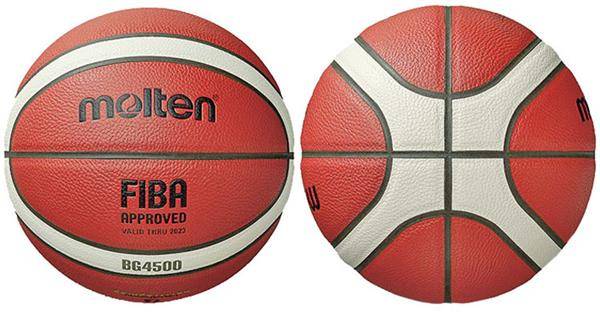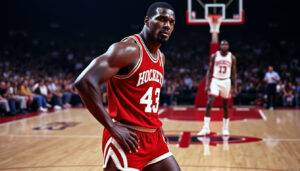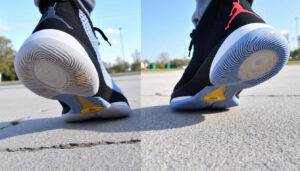Molten bg4500 vs gg7x (size 6): which basketball is better for European indoor gyms in 2025?

Coaches, gym managers and players in Europe are asking the same practical question in 2025: which Molten ball fits the rhythm of indoor club play — the competition-ready BG4500 or the soft-touch GG7X in size 6? From the 12-panel construction that improves visibility to the way a ball responds during pick-and-rolls, the choice affects training, game flow and player confidence. I tested both in real gym sessions with a Berliner club and break down why one is the smarter pick for most European indoor courts this season.
Molten BG4500 vs GG7X Size 6: Which Ball Suits European Indoor Gyms in 2025?
The short answer is this: the BG4500 is the safer pick for organized indoor play, while the GG7X is preferable for players who prioritize feel and softness in practice. That distinction matters when you run structured drills, referee games under FIBA standards, or buy balls for a youth program.
- BG4500 — built for official consistency and wider competition use.
- GG7X — engineered for tacky touch and elite indoor training.
- Size 6 — ideal for women’s and many youth leagues across Europe.
Choosing the right ball is more than brand loyalty — it changes how you execute offenses and defend in tight gym spaces. Good grip helps ball-handlers break down defenders; consistent rebound affects spacing on offense. For deeper reading on how gear and tactics interact, see resources on offensive schemes and defensive principles.
- Motion and continuity offenses — grip and bounce alter execution of set plays.
- Types of defense — the right ball helps when contesting passing lanes and closeouts.
- Why defense matters — defensive success links to equipment that supports secure handling.
Construction, feel and playability: 12-panel design and material differences
The core difference starts at the cover. Molten’s 12-panel format improves visual tracking; that’s universal across models. The GG7X uses a softer composite leather aimed at a championship-court feel, while the BG4500 is tuned for consistent bounce and approval-level performance in match settings.
- GG7X: softer touch, slightly deeper grip channels — great for shooting touch and late-game ball control.
- BG4500: firmer composite, engineered for repeatable bounce and wide-temperature performance.
- Both use Molten’s two-tone aesthetics for visibility, helping referees and players read spins faster.
In my club test, guards preferred the GG7X for ballhandling sessions; bigs liked the BG4500 when practicing post passes. The insight: choose by role and session type, not just brand name.
Durability and maintenance: Which ball lasts longer in busy European indoor gyms?
Gyms in Europe demand a balance of durability and feel. The BG4500’s composite compound is built to hold shape under repeated indoor use, while the GG7X’s softer skin requires more careful storage and regulation of humidity to keep its premium touch.
- Storage tips: avoid heaters and damp basements — both balls perform best in controlled gym environments.
- Maintenance: regular inflation checks and a soft towel wipe preserve surface tack.
- Cost-per-hour: BG4500 typically gives lower long-term cost for clubs due to its match-oriented construction.
For programs that need long-lasting equipment for training and competition, the BG4500 offers a compelling durability-to-performance ratio.
Grip, control and how it affects offensive execution
Grip changes decision-making speed. A tackier ball like the GG7X reduces fumbles on aggressive dribble drives and kick-outs. But when you’re coaching a team that runs set plays or uses precision spacing, predictability wins — and that’s where the BG4500’s consistent rebound helps shooters and cutters time their reads.
- Ball-handling drills: GG7X boosts confidence in tight dribble moves.
- Shooting drills: BG4500’s consistent rim behavior benefits repetition-based shooting.
- Refereed matches: BG4500 aligns with how officials expect the ball to behave in competition.
Teams that mix both models across practice and game-day can exploit the strengths of each, but most clubs prefer a single standardized ball for uniformity. Read about building offenses that exploit ball habits in this piece on offensive breakthroughs.
Practical buying guide for European club managers and coaches — size 6 specifics
When ordering balls in size 6 for women’s and youth divisions across European gyms in 2025, consider competition alignment, player feedback, and lifecycle costs. The BG4500 is widely used in federation play, while the GG7X shines in academies focused on technical skill development.
- For federations and official matches: BG4500 as first choice.
- For skill academies and shooting programs: GG7X for its premium touch.
- Hybrid approach: rotate GG7X in skill sessions, BG4500 for scrimmages and matches.
Local club manager Marco in Berlin switched full teams to BG4500 mid-season to align with regional tournaments and saw fewer handling penalties during official games — a clear operational win.
How this choice interacts with shoes and other gear
Ball feel and shoe traction are a package deal. Players wearing the latest indoor shoes — brands like Nike, Adidas, Under Armour and emerging models listed in 2025 gear roundups — will notice subtle differences in stop-and-start with each ball.
- Shoe reviews matter: see the Nike GT Cut 3 review and the annual 2025-26 shoe roundup for traction context.
- Other ball brands: Spalding, Wilson, Baden, Peak, Tarmak, Rawlings also offer alternatives — compare their indoor composites before bulk orders.
- Training load: heavier practice schedules demand both reliable balls and durable shoes to prevent injuries.
Aligning ball choice with footwear and training load reduces mishaps and helps players perform consistently under pressure.
Buy decision framework: arguments for BG4500 and GG7X in European indoor gyms
Be decisive: a club should standardize to minimize variance. Here’s a simple framework to choose between the two Molten options for 2025 indoor use.
- Pick BG4500 if your priority is competition alignment, long-term durability, and consistent match behavior.
- Pick GG7X if your priority is soft touch, elite feel for skill development, and maximizing individual player comfort.
- Consider hybrid procurement if you run both high-volume training sessions and federation matches weekly.
Decision insight: standardize around the primary activity of your program — training or competition — and then select the ball that reinforces that focus.
Ancillary resources and playing-style implications
Ball selection ties into coaching strategy. If your team emphasizes motion offenses and quick ball movement, a predictable bounce like the BG4500 supports coordination. If you prioritize isolation and tight handle work, the GG7X enables safer elite-level dribbling drills.
- Offensive resources: 6 offensive strategies
- Defense guides: Understanding defenses and 5 types of defenses
- Daily preparation: check inflation, rotate balls, pair with proper shoes like those covered in shoe reviews.
For coaches building systems, the ball is a tactical tool — pick equipment that amplifies your strategic strengths.
Key takeaway: For most European indoor gyms in 2025, the BG4500 size 6 is the pragmatic choice for competition-ready reliability, while the GG7X size 6 remains the go-to for touch-focused training. Choose based on program goals and enforce consistent equipment policies to get the best results.
Questions players and coaches ask
Is the BG4500 officially used in FIBA competitions?
The BG4500 is designed to meet international standards and is widely adopted for federation play; that alignment makes it a dependable match option. For detailed defensive and competition implications, check resources on official defense types and match preparation here.
Will the GG7X wear faster in regular club training?
Yes—its softer composite leather rewards touch but requires careful storage and rotation. If your gym runs multiple daily sessions, plan for more frequent replacements or dedicate GG7X balls to skill sessions only.
Can mixed-brand inventory (Spalding, Wilson, Molten, etc.) cause problems?
Mixing brands like Spalding, Wilson, Molten, Baden, Rawlings, Peak, and Tarmak creates inconsistencies in bounce and grip. Standardize where possible; if you can’t, reserve specific balls for specific drills to maintain predictable training conditions.
How should I pair balls with shoes and tactics?
Match ball selection to shoe traction and your offensive scheme. For example, the responsiveness of the BG4500 syncs well with reliable indoor shoes like those reviewed in the latest roundups, improving timing on set plays and cut recognition. See the shoe review links above for current gear choices.
What’s a quick procurement checklist for buying size 6 balls for a season?
- Decide primary use: competition vs training.
- Choose BG4500 for match consistency; GG7X for elite-touch practice.
- Order spares for rotation and wear.
- Coordinate with footwear selections and maintenance plan.
- Train staff on inflation and storage routines.
Further viewing and reading
Watch detailed comparisons and match tests to see behavior live and hear player feedback.
- Short social breakdowns on TikTok and clips from coaches offer quick takeaways and use-case scenarios.
Final operational insight: standardization reduces surprises on game day. Pick the ball that aligns with your program’s highest-stakes activity and stick with it.

